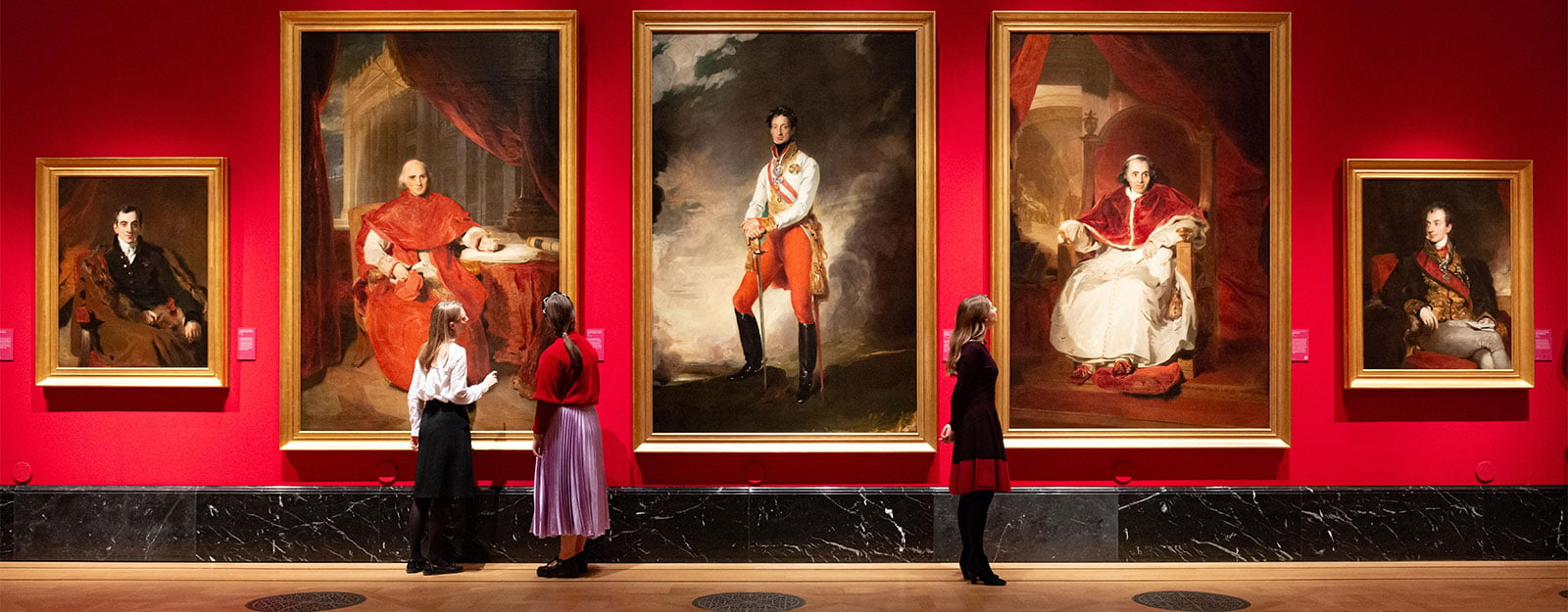
Learn more about the Royal Collection, one of the most important art collections in the world.
Furniture
The furniture in the Royal Collection falls into two broad categories. The first and by far the largest group consists of functional pieces made in Britain to furnish the royal palaces and residences. In the second category are many magnificent pieces that were purchased or presented as antiques or curiosities, and mainly of Continental manufacture.
During successive reigns, furniture was ordered for a wide variety of purposes depending on how the palaces were used and occupied at the time by the monarch and their family. It encompassed the strictly utilitarian - chairs, tables and bed - furnishings and the ornamental or ceremonial - giltwood pier tables and pier glasses, thrones and State beds. The Office of the Great Wardrobe controlled the supply of such furnishings, which were regularly refurbished or replaced. As fashions changed, items were given away or discarded. Nevertheless, owing to the continuity of royal ownership, furnishings of all kinds from the 17th century onwards have survived in the Collection.
History
The cabinet-makers, clock-makers, tapestry weavers and upholsterers who supplied the Great Wardrobe (and after its abolition in 1782, the Lord Chamberlain’s Office) were consistently those at the top of their profession. They included outstanding carvers and gilders, such as James Moore (c.1670-1726), the Pelletier family (French Protestant refugees who settled in London at the end of the 17th century) and Benjamin Goodison (c.1700-1767).
A certain amount of furniture made in the first half of the 18th century for the furnishing of George I and George II’s Palaces survives in the Royal Collection. The leading 18th-century cabinet-makers William Vile (c.1700/5-1767), John Cobb (c.1715-1778) and John Bradburn (1750-1781) supplied carved mahogany furniture to George III; and the firms of Tatham, Bailey and Sanders, and Morel and Seddon, whose very existence was largely due to their work for George IV.
During the 19th century very large quantities of everyday furniture were provided by firms such as Banting and Dowbiggin, while Queen Victoria and Prince Albert employed Holland & Son to supply the entire furnishings of their private homes at Osborne and Balmoral, as well as the residences of the Prince of Wales (the future King Edward VII) at Sandringham and Marlborough House.
Although a number of important pieces of continental furniture entered the Collection before his time, it was George IV who brought a totally new character to the furnishing of royal palaces. From the 1780s until his death in 1830, he introduced large quantities of fashionable French furniture. The confiscation and sale of royal and aristocratic property during the French Revolution enabled English collectors, of whom George IV was the most active and successful, to acquire examples by the best 18th-century French cabinet-makers. Thus the Royal Collection contains pieces by Jean-Henri Riesener (1734-1806), Adam Weisweiler (1744-1820) and Martin Carlin (c.1730-1785).
George IV’s taste was unusually broad, encompassing 17th-century cabinets by André-Charles Boulle (1642-1732) and the work of living craftsmen. His collection was strongest in pieces dating from the reign of Louis XVI, and included several made for the French king himself. Despite the hostilities between England and France that existed at the time, several French craftsmen, such as Pierre-Philippe Thomire (1751-1843) and François-Honoré-Georges Jacob-Desmalter (1770-1841), supplied George IV directly.
The 19th-century furniture in the Collection also combines the useful and the ornamental: several large orders were placed with English firms, especially Holland & Son, to furnish Osborne, Balmoral, Sandringham and Marlborough House. Meanwhile Queen Victoria and Prince Albert acquired elaborate decorative objects from the series of international exhibitions in London and Paris, notably cabinets by Emanuel Kreisser and Grohé frères.
Click on a highlight to learn more.
Highlights
Further Reading
H.Roberts, For the King's Pleasure: George IV's Apartments at Windsor Castle, London 2001




